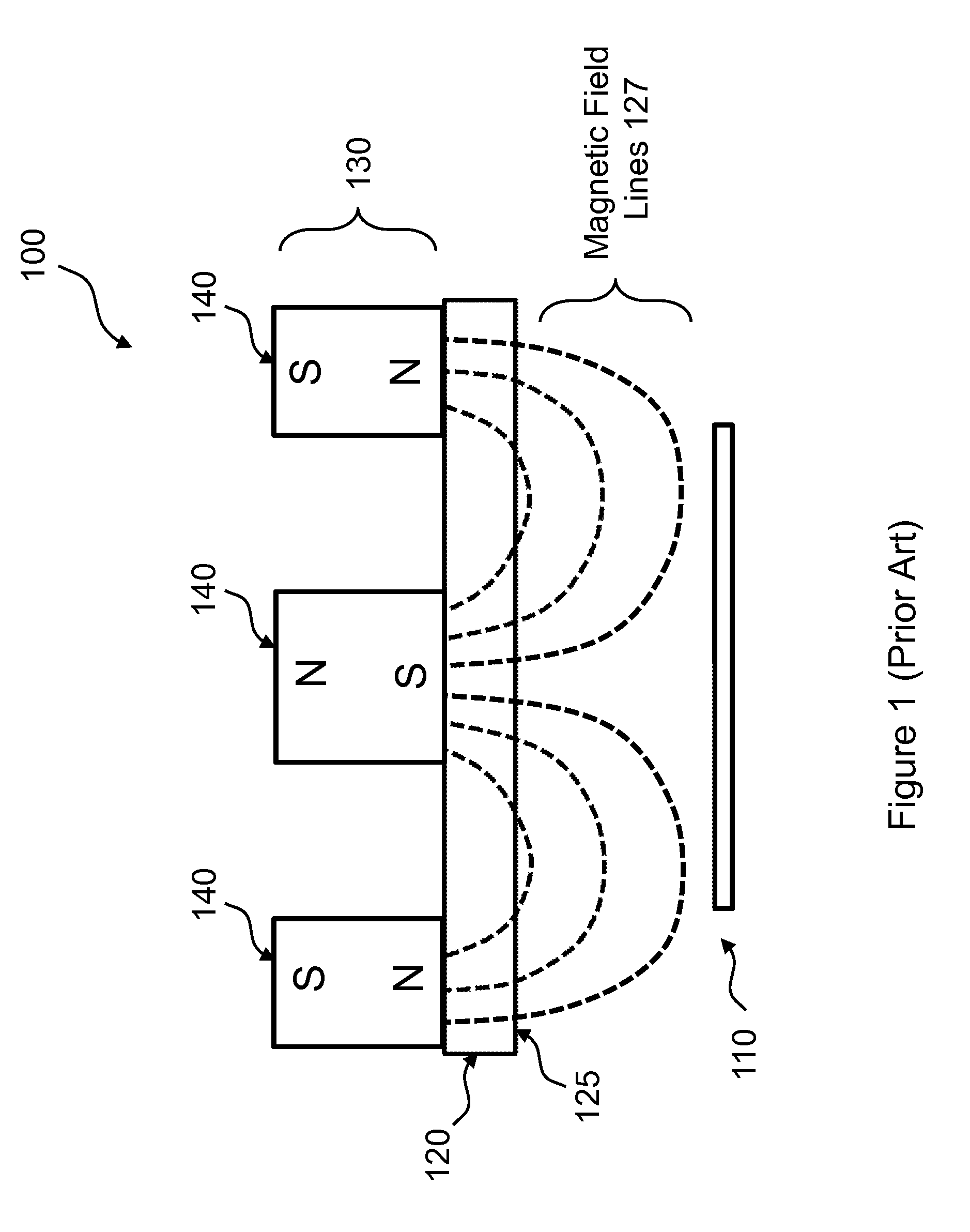Film deposition apparatus with low plasma damage and low processing temperature
a film deposition apparatus and plasma damage technology, applied in the field of material deposition technologies, can solve the problems of damage, adversely affecting the electronic performance of the device, damage, etc., and achieve the effects of minimizing or eliminating electronic defects, minimizing or eliminating such damages, and minimizing unwanted effects
- Summary
- Abstract
- Description
- Claims
- Application Information
AI Technical Summary
Benefits of technology
Problems solved by technology
Method used
Image
Examples
Embodiment Construction
[0022]Referring to FIGS. 2-3, a deposition apparatus 200 includes a magnetron sputter deposition source 210 that is positioned between substrates 220, 220A (i.e. work pieces). The magnetron sputter deposition source 210 is configured to produce vaporized materials that are directed to and deposited onto the substrates 220, 220A. The magnetron sputter deposition source 210 and the substrates 220 are enclosed in a vacuum chamber (not shown for simplicity). The magnetron sputter deposition source 210 is constructed in a backing frame 240 that forms a window 245. Sputtering targets 250 are mounted on the inner surfaces of the backing frame 240, which defines the window 245. In one implementation, the backing frame 240 can be rectangular in shape. The sputtering targets 250 have sputtering surfaces 255 that are aligned substantially perpendicular to the deposition surfaces 221 of the substrates 220, 220A. Thus the window 245 is aligned along an axial direction that is substantially perpe...
PUM
| Property | Measurement | Unit |
|---|---|---|
| magnetic field | aaaaa | aaaaa |
| transparent conductive | aaaaa | aaaaa |
| electronic defects | aaaaa | aaaaa |
Abstract
Description
Claims
Application Information
 Login to View More
Login to View More - R&D
- Intellectual Property
- Life Sciences
- Materials
- Tech Scout
- Unparalleled Data Quality
- Higher Quality Content
- 60% Fewer Hallucinations
Browse by: Latest US Patents, China's latest patents, Technical Efficacy Thesaurus, Application Domain, Technology Topic, Popular Technical Reports.
© 2025 PatSnap. All rights reserved.Legal|Privacy policy|Modern Slavery Act Transparency Statement|Sitemap|About US| Contact US: help@patsnap.com



